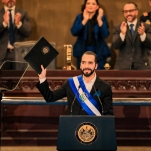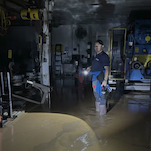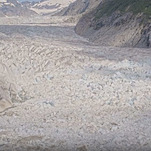The death midwife: Women were the original undertakers
With Halloween approaching, skeletons are coming out of the closet—including those belonging to the death industry, which has a pretty spooky history in this country. What’s spookier than death itself? Only the commodification and industrialization of death!
In her new book Greening Death: Reclaiming Burial Practices and Restoring Our Tie to the Earth, author Suzanne Kelly explores this history, offering a fascinating—and very feminist—exploration of death, funerals, and burials, and their impact on culture, economics, and, as the title suggests, the environment.
The book is filled with stomach-churning accounts, but the most compelling involves women’s largely forgotten history of caring for the dead. It turns out that before the funeral “industry” developed, women played a huge role in death practices—and recently, some women have begun to reclaim their role as society’s “midwives to the dead.”
Today, the death industry is a $15 billion beast that encompasses funeral homes, cemeteries, insurance companies, and an array of products. Or more succinctly—COSTCO SELLS CASKETS! But before this industrialization, around the turn of the 19th century, death care was considered to be part of the women’s realm.
“Women largely cared for the dead,” Kelly told me over the phone on Thursday. This care meant “washing the dead, clothing the dead, laying out the dead.” While women were not typically involved in the actual burial, most prep work “tended to fall in women’s hands, primarily because it was seen as an extension of care work that they did for children, for the sick, and for other family members.”
But women’s role in death care began to diminish around the time of the Civil War— thanks to the introduction of embalming, or the practice of preserving the human corpse.
During the war, every day, Union soldiers would die hundreds of miles away from home, and the army would scramble to return their bodies to their families for a proper burial–racing against the clock of nature and decomposition. Soon, medical professionals from the North began traveling to battlefields to embalm soldiers for the journey back home. Roughly 40,000 bodies were embalmed.
“You’d think that embalming would die away after that,” Kelly said—after all, until that point, the whole idea of embalming was seen as disrespectful and degrading in this country. “You would think that—given that it was seen as a fate worse than death prior to the Civil War—it would have just disappeared. But in fact, it only became stronger.”
Abraham Lincoln’s body was famously embalmed over and over again after his assassination and ferried around the country for people to see, which sort of normalized embalming, said Kelly. And of course, where there’s a profit to be made, there’s a way. Chemical companies began to set up workshops in schools to train interested parties to embalm—which led to mortuary schools.
-

-

-

-

-

-

-

-

-

-

-

-

-

-

-

-

-

-

-

-

-

-

-

-

-

-

-

-

-

-

-

-

-

-

-

-

-

-

-

-

-

-

-

-

-

-

-

-

-

-

-

-

-

-

-

-

-

-

-

-

-

-

-

-

-

-

-

-

-

-

-

-

-

-

-

-

-

-

-

-

-

-

-

-

-

-

-

-

-

-

-

-

-

-

-

-

-

-

-

-

-

-

-

-

-

-

-

-












































































































